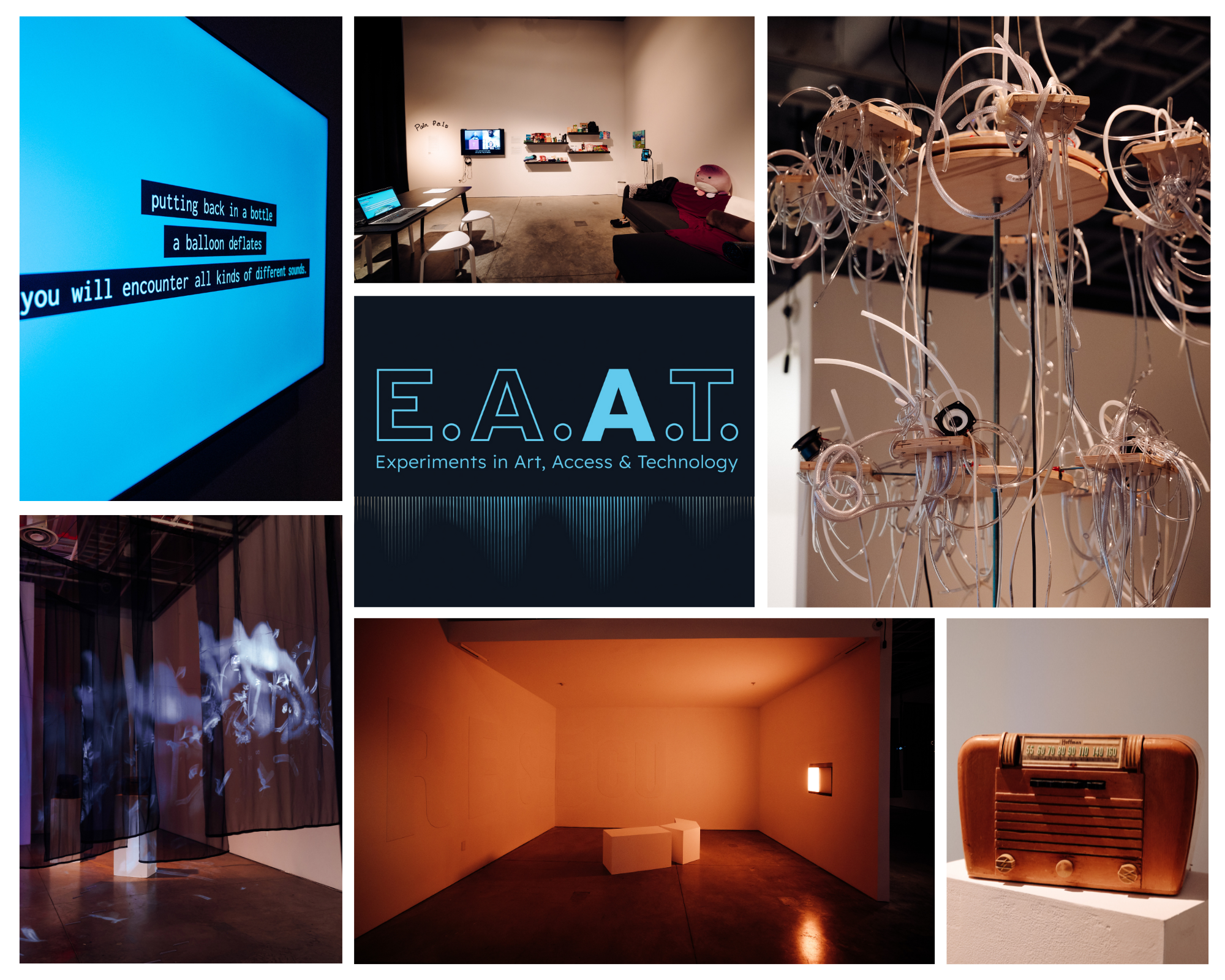Now Open: Experiments in Art, Access & Technology (E.A.A.T.)

We are thrilled to announce our highly anticipated exhibition, Experiments in Art, Access & Technology (E.A.A.T.), is now open to the public at the Beall Center for Art + Technology, UC Irvine! With the doors now wide open, we invite you to embark on a journey featuring innovative practices in art and technology that arise from—and viscerally embody— lived experiences of disability. Spanning spatial audio, surveillance technologies, gaming, software, haptics, auditory prostheses, and the built environment, E.A.A.T. artworks use the multisensory affordances of media arts to widen the horizon of access.
Experiments in Art, Access & Technology (E.A.A.T.) is the culminating exhibition of Leonardo CripTech Incubator, an art and technology fellowship for disability innovation. Encompassing residencies, workshops, presentations, publications, and education, this innovation incubator creates a platform for disabled artists to engage and remake creative technologies through the lens of accessibility.
As you step into E.A.A.T., you’ll find yourself surrounded by pieces that test the limits and affordances of media and machines. These works draw attention to ableist values of functionality, usage, and navigation encoded in such devices. Fradkin’s voice-activated sculpture, babbel (2023) that, listens to the formation of speech and explores the loss of meaning in buzzwords. Papalia’s Pain Pals provides a space where players can connect around experiences of pain: physical, emotional, and psychic. Sale’s Total Running Time illuminates the often-hidden interconnections between disability, telecommunication, and surveillance technologies in prison systems and how they shape our experience of time. Slater’s Unseen Sound uses audio as material for science fiction worldbuilding, embodying blind modalities of being, reimagining drifting as an aural adventure through a speculative sonic environment. Ting’s immersive multi-channel projection, Song Without Words (2023) renders the gestural continuities between piano, musical conducting, and sign language to redefine the phenomenological experience of listening. All of these works foster dialogue and exploration, bringing transparency to often opaque black box systems.
One of the hallmarks of E.A.A.T. is our commitment to accessibility. Access is a creative practice that goes beyond mere compliance. Recognizing the disabled community is not homogenous, and our needs are not identical or static, access requires communication and collaboration. Experiments in Art, Access & Technology (E.A.A.T.) embraces access—and its frictions—as necessary interventions and learning opportunities. Some of the access features of E.A.A.T. includes tactile maps and braille versions of wall texts created by Lighthouse for the Blind and Visually Impaired in San Francisco. Right by the entrance, there is an access station filled with various items, including masks, hand sanitizer, noise-suppressing headphones, and foam earplugs. Throughout the gallery are QR codes that link to an audio-described version of their work. These audio descriptions and other virtual access elements are housed on our virtual exhibition site, acting as an extension of the exhibition, allowing individuals who aren’t able to visit the physical exhibition to experience E.A.A.T. fully. This access is art. And art is never enough.
